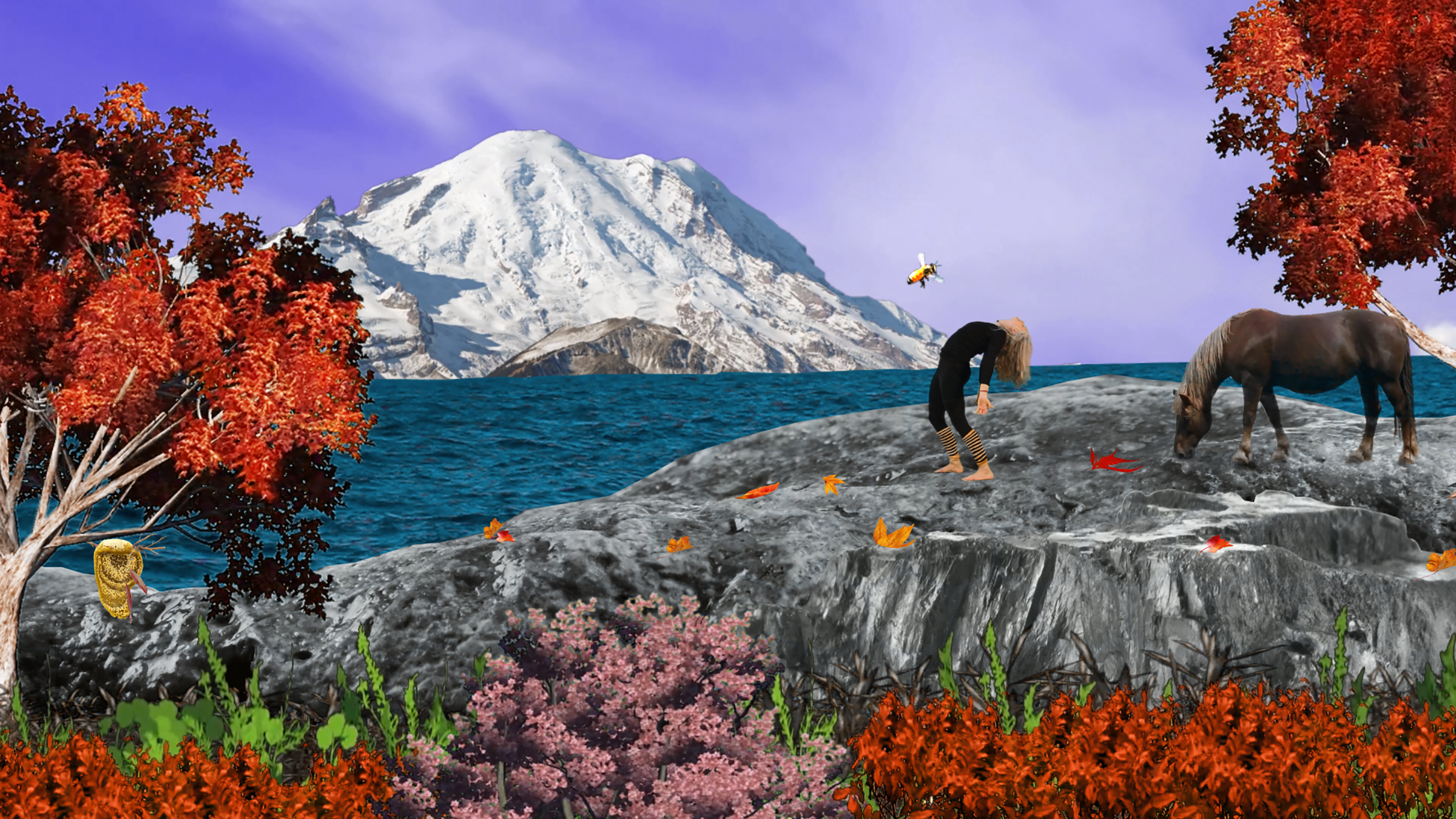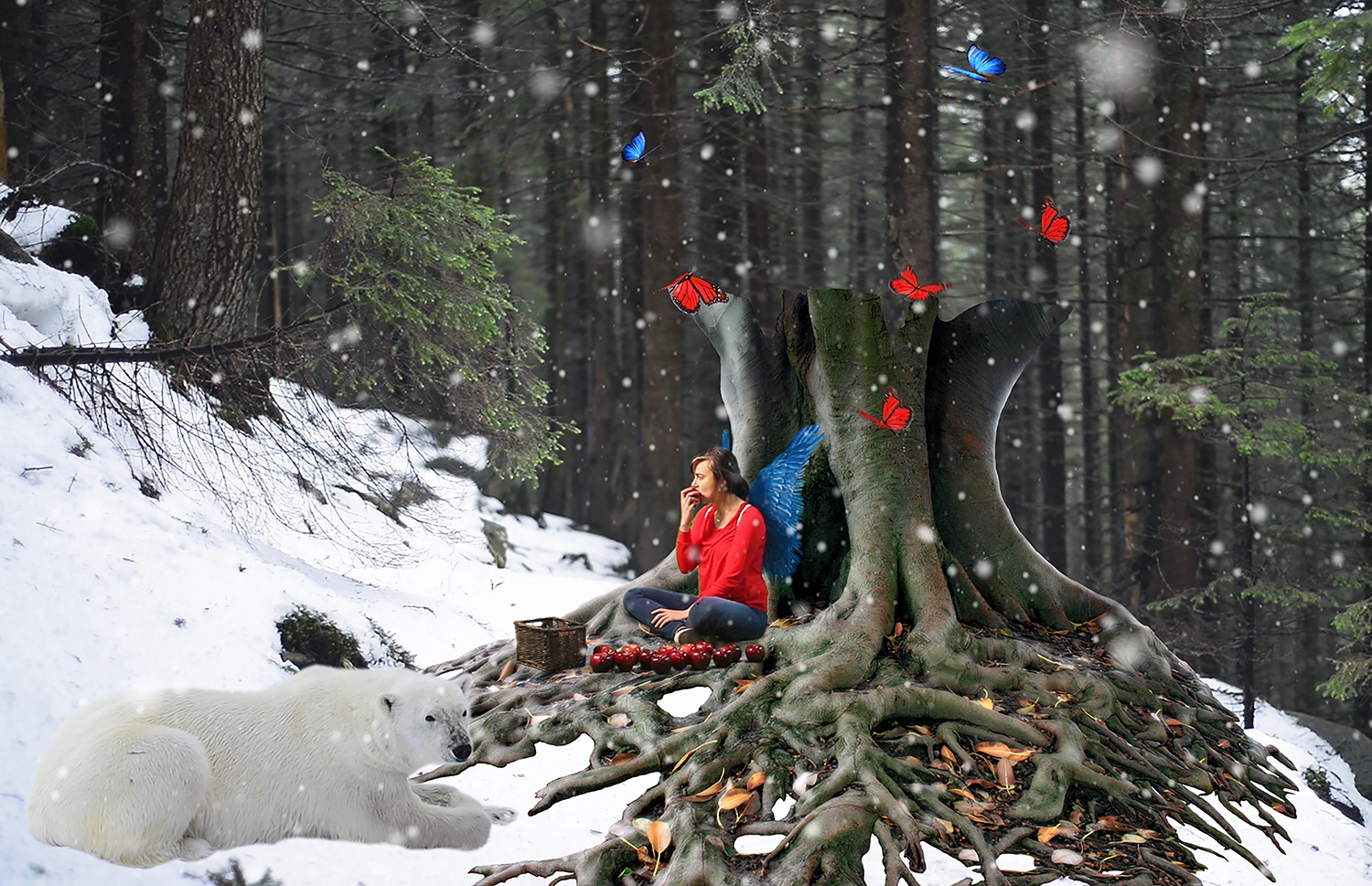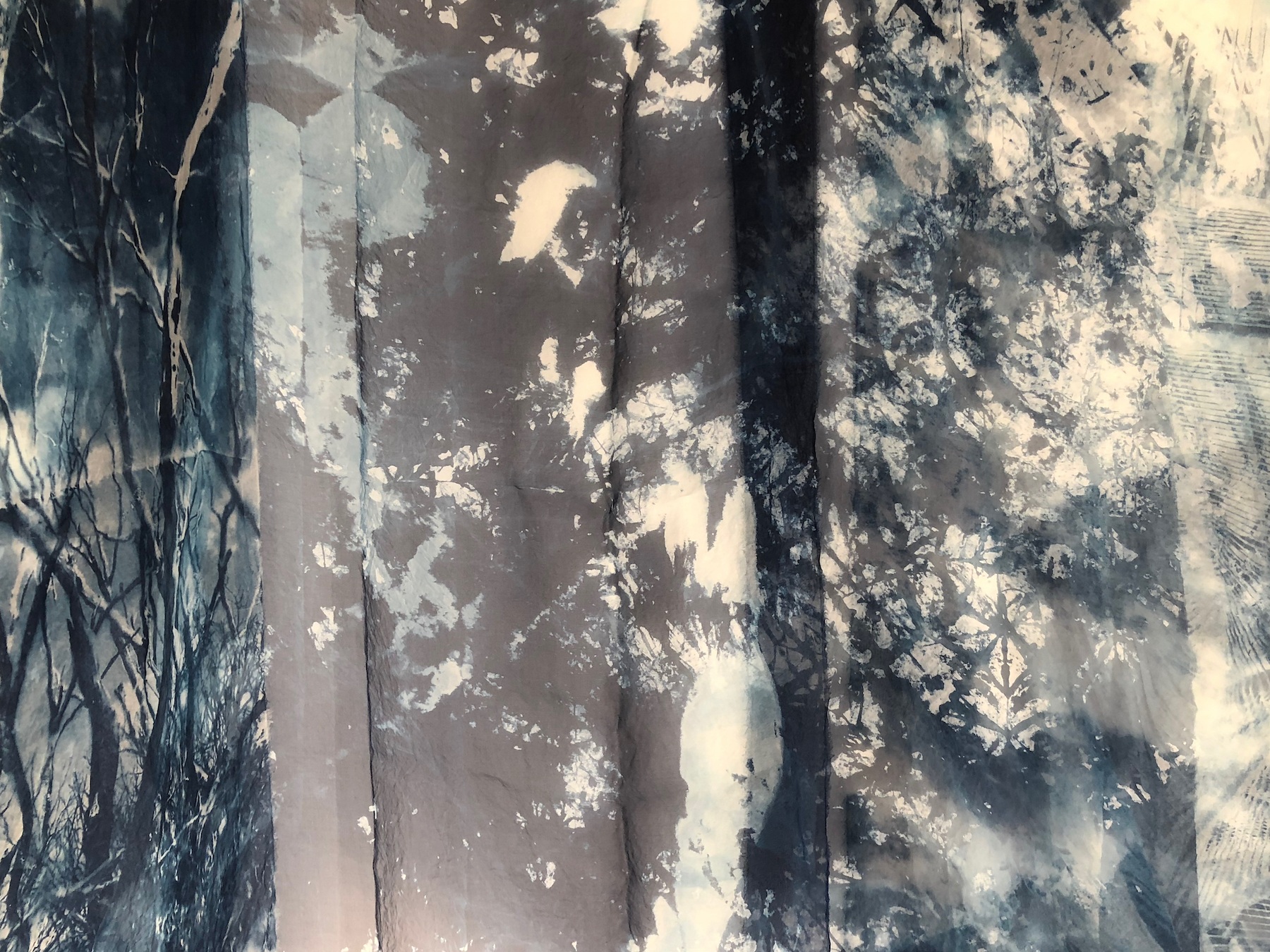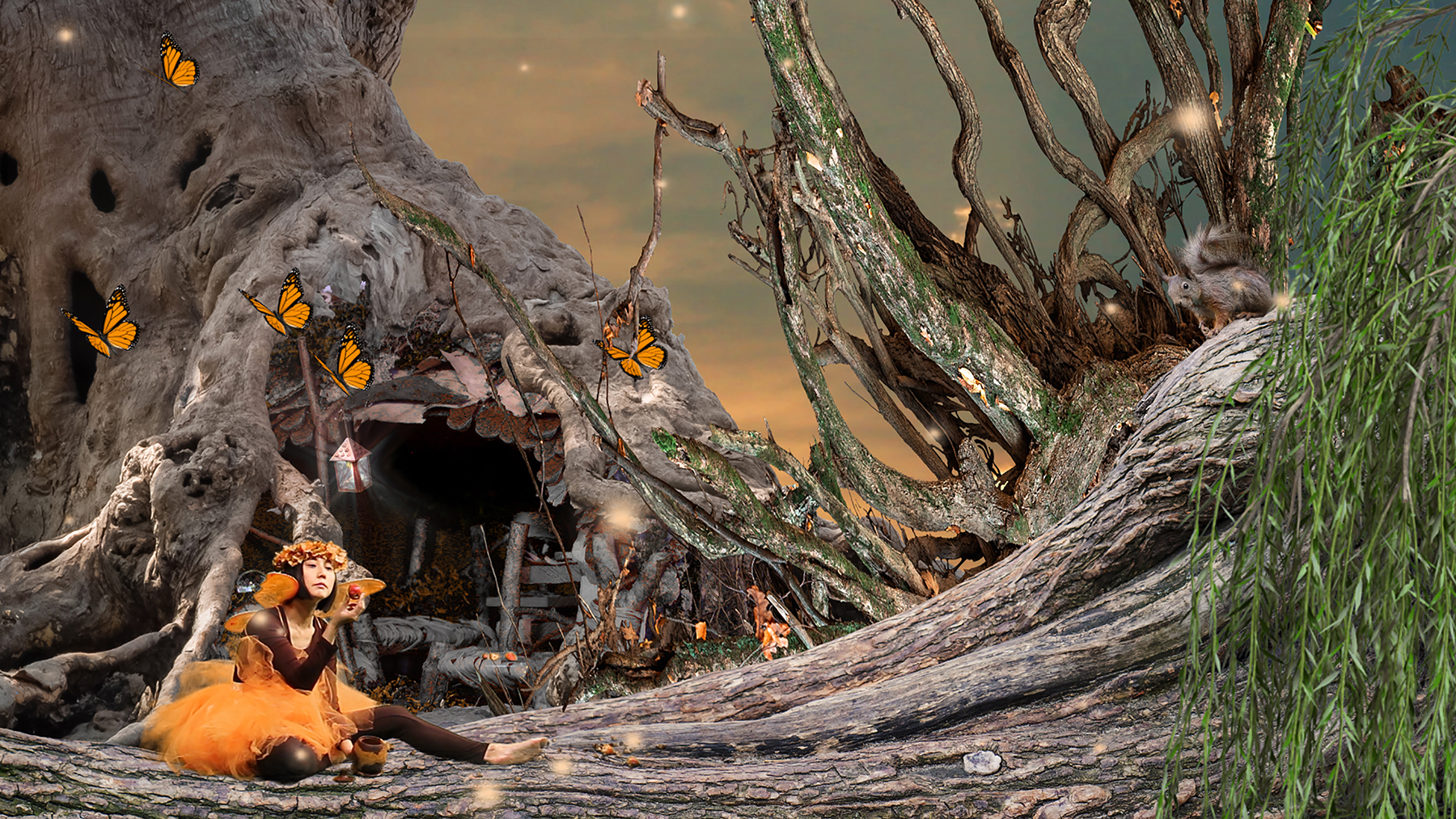Secrets of The Unseen
Next up in the Main Gallery is Secrets of the Unseen, an exhibition inviting you to explore the possibilities of transcendence and rebirth through a secret power linked the the survival instincts of all life forms. This show features core artists Marie Craig and Allison Maria Rodriguez. The show will run through June 2nd with an opening reception on Friday, May 3rd from 6:00–8:00 p.m. Below the artists share insights behind making art.
During the preparation for “Secrets of the Unseen”, the two artists had really meaningful discussions about what inspires them, and about how and why they do the work they do. Some of those conversations are shared with you below.


Allison: I always find it interesting and inspiring to hear about the ways in which other artists create work. Not only is it intellectually interesting, but it often gives me insight into my own artistic process while also training me to read and understand art as a whole more deeply. I am always learning from others. It’s so amazing to be showing with you Marie, and I am curious about how you develop ideas conceptually. How much of that process do you think is guided by intellectual exploration and how much is intuition based? Perhaps starting with “Natural Consequences”, the work you are exhibiting in “Secrets of the Unseen”, can you tell me a little bit about very early conceptualization of the work? When did you first realize you were working on this project, what did it look like to you then, and what do you think about its early generation in retrospect?
Marie: The ideas for Natural Consequences grew organically, evolving from “Juncture”, the series that came before. Originally my decisions were very much tied to process, mainly because I work outdoors, exposing the fabric in the sun, rinsing in water, drying in the wind. I spend a lot of time outside waiting for things to happen, which allows my mind to wander, so at first, it was mainly intuitive. E. O. Wilson’s “The Meaning of Human Existence” and other books helped those vague ideas coalesce.
Making the large cyanotypes ties me directly to nature.This work helps me, literally, grapple with the idea of climate change, again from the point of view of discernment and clarity. The problem seems too big to grasp, too impossible for one individual to affect change in any meaningful way. The ‘Natural Consequences’ installation is a way for me to process that, to show visually how within overlapping narratives there can be moments of understanding.


Marie: I’m curious about the way your ideas develop, as well. How did you begin to form the ideas that became your “Legends Breathe” series? Did you see patterns and connections right away, or did the project evolve over time?
Allison: I like that phrase “within overlapping narratives there can be moments of understanding”. It sounds like there is a certain aspect of “play” in this as well. When images are unexpectedly seen side by side, you are catching something that opens up a broader understanding (or more questions) - but this requires the ability to flirt with randomness and chance . . or to permit yourself to be guided by intuition (as you mentioned). It reminds me of one of my previous projects, “In the Presence of Absence” when I saw a photo of my deceased grandmother in Cuba and a photo of the last thylacine (Benjamin), now extinct, side by side in my studio and something opened up inside of me. It generated a rather large body of work and I started recognizing connections between diverse ideas I was “playing” with, or intuitively drawn towards, connections I was not cognitively aware were there. I think we (those in the US) use the term “play” often when we mean following intuition, we‘ve just culturally divorced ourselves from the value of both since they are actions/endeavors without the primary agenda of output/product - they are not very valuable in a capitalist system.
Anyways, “Legends Breathe” is a project that has been growing inside me for awhile - I knew I wanted to do something to celebrate creativity and the imagination in overcoming trauma. I knew I wanted to work with the stories of other women. Trauma is isolating, and art is about communication . . and survival. I wanted to honor that, in this work. I find it very difficult when asked “how long did you work on this project” . . not just because I’m never working on one thing at one time, but also because I don’t develop ideas, or experience my conceptual process, in a linear fashion. I originally thought the direct relation in this project to my environmental work was something I was unaware of until I’d done several interviews, but I don’t believe that to be true anymore. I’ve been consistently working with ecological trauma and the pain of our planet, and it makes sense that the fantasies would highlight the natural world since we are a part of that world and our connection to nature gives us a sense of wholeness and safety. I think I unconsciously was aware of this from the beginning - my work is just usually two steps ahead me.


Allison: Did you have any realizations in your process that surprised you, or that made you change the way you think about the work?
Marie: I love the way you describe how your work can tell you what it’s about even before you’re aware of it consciously. For me, process decisions often start as practical solutions to technical issues. Originally I began making cyanotypes on fabric simply because I wanted to make them larger than I could on paper. I was surprised by the way the the images on fabric were so much more fluid and tactile, way beyond just being bigger. Then when I began experimenting with transparent silk, something magical happened. Their translucence allowed me to separate the images of architecture and nature that before I had combined on one plane. Now I was able to overlap the images and add to the complexity. Watching them move with the breeze and partially obscuring the landscape led me to photograph the finished cyanotypes in nature. Conceptually I began to think about the idea of discernment within complexity, and the ability to recognize and appreciate different viewpoints that are fluid and changing.

Marie: We’ve talked about where the ideas come from and and how we approach the work. I’m curious about what you wish for the viewer. When you design the viewer experience, what factors do you consider?
Allison: I want to generate an experience that permits the viewer to open up, to think differently, and to feel connected to what exists beyond themselves & beyond the individualism our society privileges. I consider how to create situations in which I can shift consciousness, even just a little. I’ve talked some about my conceptual process but not my technical one. My technical process for making can be so detail oriented (“tedious”) that it is perhaps a form of meditation. I do a lot of frame by frame compositing. I think the meditative quality that goes into making comes out in the experience as well. My work, in a way, asks the viewer to slow down and to savor the beauty of our world . . . a beauty that is perhaps fleeting quickly.
You? What do you hope for the viewer?
Marie: I really want the viewer to slow down as well! We’re bombarded with images and content, it’s so easy to let it all wash over us and not really experience much of anything in depth. I like to create images that are ambiguous, where something doesn’t quite add up, and it’s not immediately obvious what’s going on. I hope something catches the eye, like color or texture, and then curiosity causes the eye to linger, and that moment sparks connections with the viewer’s experience of the world.
